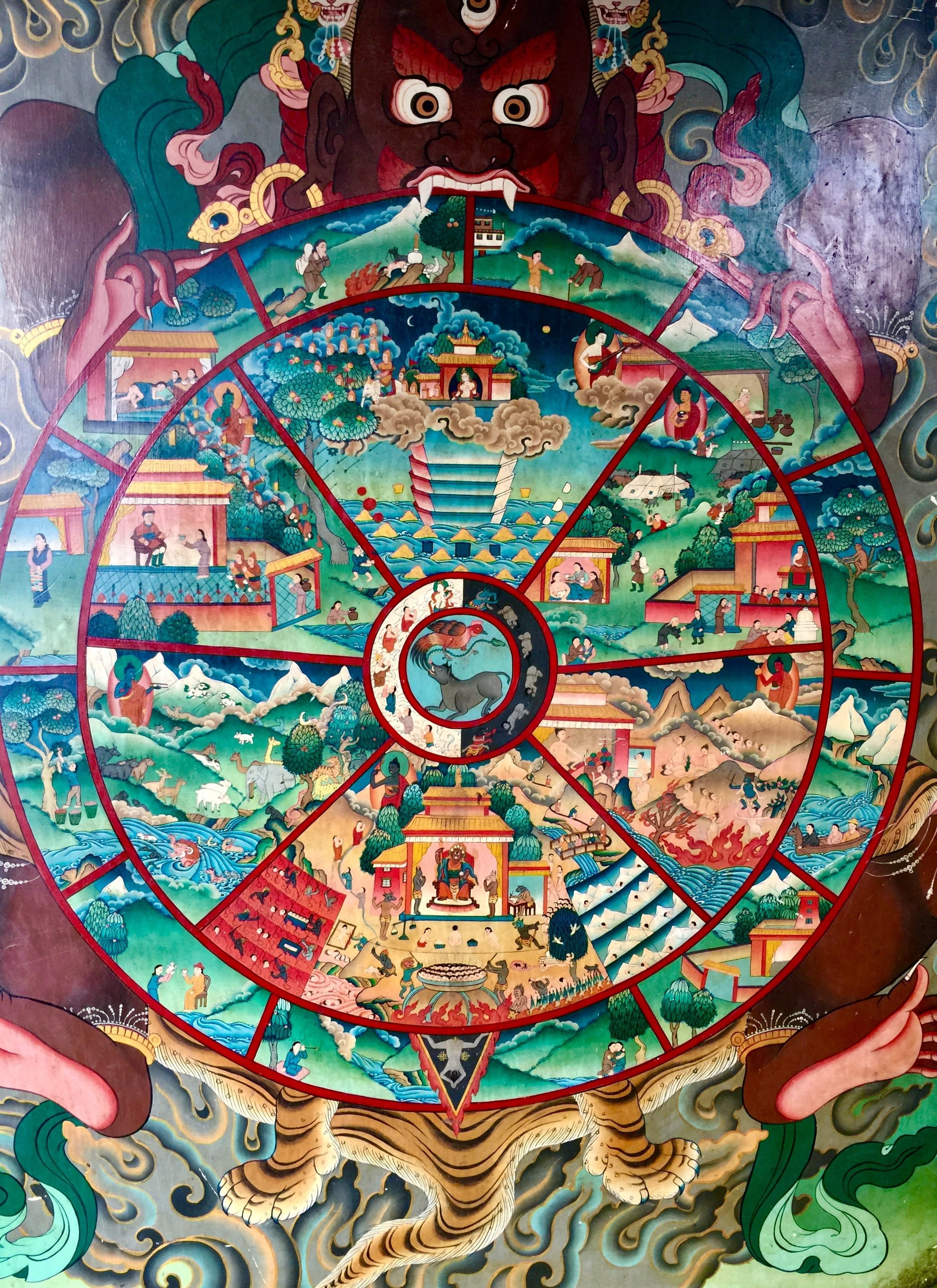The Sacred Sites of the Dharma WHeel's Three Turnings
(Click here to embark on the journey or read the introduction below)
Introduction to the Three Turnings
In their most basic sense, when we speak about the teachings of Shakyamuni Buddha, we are talking about teachings on the nature of reality, beyond the standard lens of conceptuality our ordinary minds use to perceive. These teachings on reality transmitted by the Buddha are what we call the Dharma. The Dharma is often signified by an eight spoked wheel, and the turning of this wheel is synonymous with a qualified teacher teaching the genuine Dharma. The Buddha's teachings can be understood in terms of "three turnings.”
First Turning at Sarnath (Four Noble Truths, Twelve Links of Dependent Origination, and lack of true self)
Second Turning at Rajgir (Prajñaparamita or emptiness)
Third Turning at Mt. Malaya, Vaishali, and Rajgir (Tathagata-garba or buddha-nature)
As simply a means of conveying the basic nature of reality, the Dharma would still be the case whether or not the Buddha was present in our eon to articulate it. Fortunately, the Buddha did expound these teachings, providing all beings with a vessel capable of carrying us out of delusion and into a complete realization of the nature of all phenomena. This awakening to the true nature is what we refer to as enlightenment.
While the ultimate nature is completely beyond words and concepts, the Buddha used language and other skillful means to bring beings closer to this realization. For this reason, Shakyamuni Buddha gave different teachings at different times and locations based on the needs of the particular beings, in their particular time and place. As the needs of un-enlightened beings are incredibly diverse, the Buddha taught 84,000 sutras to address every negative emotion. While the number 84,000 is quite vast, when we divide these teachings into the Three Turnings of the Dharma Wheel, we can gain a better understanding of their basic message.
First Turning
Location: Deer Park, Sarnath
Audience: The Buddha's five former meditation companions
Brief Account: Soon after the Buddha's great awakening under the Bodhi Tree, he was requested by Brahma to teach. Following this request, he went to Deer Park, outside of Varanasi at Sarnath, to teach his profound realization to his former meditation companions. There, in Sarnath, the Buddha taught the first wheel of Dharma. Find out more about Sarnath here.
Topics: The main topics of the First Turning are the Four Noble Truths, Dependent Origination, and the lack of a truly established self.
four noble truths
Truth of suffering
Truth of the cause for suffering
Truth of cessation of suffering
Truth of the path to suffering's cessation
Twelve Links of Dependent Origination
Ignorance (Literally “not seeing”)
Formation or volitional activity
Consciousness
Name and form
Six senses (eye, ear, nose, tongue, body, and mind)
Contact
Feeling
Thirst or craving
Grasping
Becoming
Birth
Aging and death
Main Sutras: The Sutra of the Wheel of Dharma, Lalitavistara Sutra
Second Turning
Location: Vulture Peak, Rajgir
Audience: Great assembly of monks and bodhisattvas, as well as other being from other realms.
Brief Account: While many sutras can be categorized as belonging to the Second Turning, the quintessence of them all is the Heart Sutra, taught at Vulture Peak just outside the city of Rajgir. This location was one of the Buddha's primary retreat spaces, and was the stage for a large number of the Buddha's teachings.
Topics: The primary aspect of the Second Turning is prajñaparamita, or wisdom gained through the realization of emptiness. While the Buddha taught the lack of a truly existing self in the First Turning, he extends that lack of inherent existence to include all external phenomena in the Second Turning.
Main Sutras: Heart Sutra, Lotus Sutra, Samadhiraja Sutra, Diamond Sutra, Vimalakirti Sutra
Third Turning
Location: The main location of the Third Turning is not as easy to pinpoint as the previous two, though Vaishali is often said where the Buddha first turned this wheel of Dharma. Mount Malaya is also closely associated with the Third Turning as the setting for the Lankavatara Sutra. The Buddha also taught the Tathagata-garbha Sutra at Vulture Peak, closely linking Rajgir with both the Second and Third Turnings.
Audience: Various beings
Brief Account: The Buddha first taught inner emptiness (no-self), followed by outer emptiness (lack of inherant existence to external phenomena). To further elaborate on our basic essence, he taught that all beings have buddha-nature, or tathata-garbha. This was by no means in contradiction to his previous teachings, but meant to compliment what was previously taught. Rather than possessing a truly existing self, all being have buddha-nature as their basic essence, which is none other than emptiness beyond elaboration. These teachings are fundamental to the Zen tradition, and the Vajrayana vehicle, particularly Mahamudra and Dzokchen.
Topics: Buddha-nature, luminosity
Main Sutras: Tathagata-garbha Sutra, Lankavatara Sutra, Samdhinirmocana Sutra, Mahayana Mahaparinirvana Sutra, Avatamsaka Sutra
Start your pilgrimage: Lumbini





